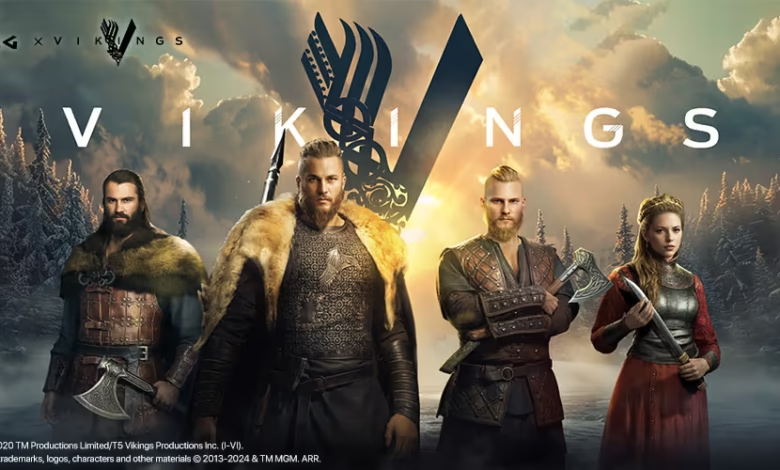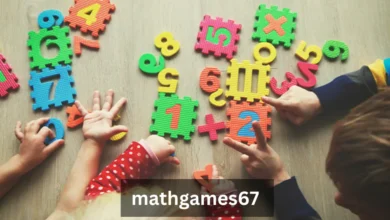Vikings Game: A Deep Dive into the Thrilling Experience

Introduction to the Vikings Game
The Vikings game brings to life the rich tapestry of Norse culture and mythology, engaging players in a unique blend of strategy, adventure, and historical intrigue. Originating from the fascination with the Viking Era, these games have evolved over the years, showcasing the legendary seafaring warriors renowned for their exploration and conquests. The allure of Viking life, characterized by its exploration of distant lands, daring battles, and complex societal structures, has inspired a variety of gaming experiences across multiple platforms.
Typically, gameplay often revolves around strategic combat, resource management, and character development, allowing players to immerse themselves in the role of a Viking chieftain or warrior. Players are frequently tasked with building settlements, raiding neighboring territories, and engaging in epic battles, often incorporating elements of role-playing games (RPGs) to enhance character progression and emotional investment. The combination of these mechanics creates an engaging experience that resonates deeply with fans of both gaming and Norse mythology.
The cultural significance of the Vikings is profound, as they are often depicted as both brutal warriors and skilled traders in historical narratives. Their legacy has significantly influenced modern interpretations in popular culture, making the Vikings game not only a source of entertainment but also an educational tool that introduces players to the complexities of Viking life. Through such games, players gain insights into the values, beliefs, and practices of this fascinating civilization, contributing to a continued interest in their stories and legends.
As the gaming industry continues to grow, the Vikings game stands as a testament to the enduring fascination with this historical era, offering both entertainment and a glimpse into a world shrouded in myth and adventure. In the following sections, we will delve deeper into the various aspects of these games, exploring their gameplay, thematic elements, and the community they cultivate among enthusiasts.
The Origins of Vikings in Gaming
The depiction of Vikings has played a pivotal role in shaping the gaming landscape, with roots that can be traced back to early video games that embraced Norse mythology and Viking culture. It is fascinating to observe how these elements have evolved over time and influenced various gaming genres. In the 1980s and 1990s, games began to emerge that highlighted these fierce, warrior-like figures. Titles such as “The Lost Vikings” showcased this theme by blending side-scrolling platform mechanics with puzzles while presenting players with humorous renditions of Viking characters.
As technology advanced, so too did the portrayal of Vikings in gaming. The addition of complex narratives and more immersive graphics allowed developers to dive deeper into the lore and aesthetics of Viking culture. The critically acclaimed game “Age of Empires II,” released in 1999, introduced players to Viking factions that emphasized their historical significance in trade and exploration, portraying them as not just warriors but also skilled craftsmen and navigators.
Furthermore, the role-playing genre soon adopted Viking themes, leading to popular titles like “God of War” (2018) and “Assassin’s Creed Valhalla,” which offered players the chance to engage with Norse mythology firsthand. These games not only provided impressive graphics and engaging game mechanics but also introduced a plethora of elements drawn from historical Viking practices, beliefs, and societal structures. Players encountered deities, mythical creatures, and legendary narratives that brought the world of the Vikings to vivid life.
As gaming culture has continued to evolve, so has the portrayal of Vikings, reflecting a growing interest in their rich history and traditions. Every iteration brings with it greater depth and authenticity, ensuring that the Vikings game genre becomes more immersive and appealing to a broad audience. The ongoing fascination with these storied warriors firmly secures their place in the gaming universe, providing new adventures for players to explore.
Gameplay Mechanics of Vikings Games
Vikings games are renowned for their intricate gameplay mechanics that foster an engaging and immersive experience, drawing players into the rich world of Norse mythology and history. Central to the appeal of these games is their strategic depth, which often requires players to make critical decisions that influence the outcome of their adventures. Players typically assume the role of a Viking leader, navigating through challenges such as resource management, territory expansion, and engaging in diplomacy or warfare with rival clans.
Combat systems in Vikings games also play a pivotal role in enhancing player engagement. Many of these games incorporate real-time action elements, allowing players to execute skillful maneuvers and combos during battles. Players can often customize their characters with various weapons, armor, and abilities that align with their unique play styles, making each combat encounter distinct. The thrill of tactical warfare is amplified through the interplay of different units, strategies, and terrain features, which necessitate well-thought-out plans to achieve victory.
An essential aspect of the gameplay mechanics in Vikings games is their narrative elements. These games often feature branching storylines that respond to player choices, effectively creating a dynamic plot that evolves based on individual actions. This narrative depth not only heightens the emotional connection between players and their characters but also encourages repeated playthroughs, as players explore different pathways and outcomes. The fusion of strategy, combat systems, and rich narratives distinguishes the Vikings game genre, offering players an unparalleled experience steeped in adventure and discovery. Thus, the unique mechanics of Vikings games work cohesively to deliver a comprehensive gameplay experience that resonates with enthusiasts of both the genre and Viking lore.
Character Development in Vikings Games
Character development plays a pivotal role in enhancing the overall experience within Vikings games. Players often embark on their journey by customizing their character’s appearance and attributes, selecting from a array of archetypes that reflect diverse roles. These archetypes typically include warriors, raiders, strategists, and merchants, each bringing unique capabilities that shape the gameplay dynamics and narrative possibilities.
Central to character progression are skill trees and abilities that allow players to hone their characters in specific areas. For instance, a warrior may focus on melee combat skills, while a strategist might prioritize diplomacy and resource management. This strategic differentiation not only provides depth to the character creation process but also empowers players to tailor their gameplay experience to their personal preferences. Furthermore, skills are often interconnected; for example, investing in a character’s crafting abilities can enhance their proficiency in creating superior weapons and armor, which in turn affects their combat effectiveness in the Vikings game world.
An intriguing aspect of character development in these games is the impact of player choices on both gameplay and narrative outcomes. Decisions made during the game can lead to profound consequences, such as alliances formed with other characters, or even entire factions. This level of player agency means that no two gameplay experiences are exactly alike, as each player’s character can evolve based on their choices. Such a dynamic not only increases replayability but also fosters a deeper emotional investment in the game, as players witness their characters grow, face challenges, and react to in-game events.
Ultimately, character development in Vikings games is more than just a mechanical element; it serves as a fundamental narrative pillar that enriches the player’s journey and enhances the immersion within the richly woven world of Norse mythology.
The Role of Exploration and World-building
Exploration is a fundamental aspect of any Vikings game, serving as a pivotal mechanism through which players engage with the game’s universe. The vast and intricately designed worlds allow players to navigate a variety of environments, ranging from coastal fishing villages to dense forests and snow-capped mountains. Each location not only provides a unique backdrop for adventures but also immerses the player in the rich culture and history of the Vikings. This attention to detail in world-building enhances the overall player experience, inviting them to uncover the mysteries and stories that lie hidden within.
In these expansive worlds, non-player characters (NPCs) play a key role in deepening the sense of immersion. Interactions with NPCs can lead to various quests—some linear and others open-ended—that challenge players with tasks reflective of Viking life, such as trading, raiding, or forging alliances. The authenticity of the NPCs, coupled with their unique personalities, enriches the narrative, allowing players to feel a genuine connection to the Viking culture. As players embark on quests, they not only advance their gameplay but also learn about the traditions and values that defined the Viking way of life.
Moreover, the lore embedded within these worlds serves as a narrative backbone that enhances exploration. Many Vikings games weave in historical elements, legendary tales, and mythological references, providing context for the player’s journey. This intricate storytelling invites deeper exploration and encourages players to delve into the histories and stories that shape the vast landscapes they traverse. Ultimately, the effective world-building and exploration elements of Vikings games create an extraordinary experience, where players can immerse themselves in the rich tapestry of Viking culture, making each virtual adventure uniquely engaging.
Multiplayer Experience in Vikings Games
The multiplayer experience in Vikings games has become a significant aspect of their overall appeal, providing players an opportunity to engage with others in both cooperative and competitive modes. These multiplayer formats not only enhance gameplay dynamics but also foster community engagement and camaraderie among players. In recent years, developers have increasingly focused on refining these multiplayer experiences, ensuring they resonate with the gaming community’s desire for social interaction.
Cooperative gameplay in Vikings games allows players to team up and take on challenging quests, hunt for resources, or conquer formidable foes together. This aspect promotes a sense of teamwork, as players must communicate effectively and strategize to achieve shared objectives. Games that emphasize this cooperative element often encourage players to develop friendships and alliances, enhancing the overall social experience. Players can join clans or guilds where they collaborate on missions, share their progress, and support one another in their in-game endeavors. Such interactions often translate into lasting friendships beyond the gaming environment.
On the other hand, competitive modes in Vikings games introduce an added layer of excitement and unpredictability. Players can challenge one another in various formats, such as arena battles or clan wars, testing their skills against opponents. This competitive spirit fosters a vibrant community where players strive to improve and showcase their abilities. Leaderboards, seasonal events, and tournaments are common features that keep players returning to the game, fueling friendly rivalries and encouraging continuous engagement.
Ultimately, the multiplayer experience in Vikings games enriches the gaming world by providing diverse ways for players to connect. Whether working together to conquer vast landscapes or competing for supremacy in thrilling battles, these experiences help create a strong sense of community that extends beyond the virtual realm.
Visual and Audio Design in Vikings Games
The artistic direction of Vikings games plays a crucial role in crafting an engaging and immersive experience for players. High-quality graphics and detailed character design contribute significantly to the overall responsiveness and relatability of the gaming environment. In these games, developers tend to utilize a color palette that reflects the harsh yet beautiful landscapes of the Viking world. Rich earth tones, icy blues, and stark whites are often dominant, evoking the feel of Nordic regions and enhancing the authenticity of the setting.
Character design is particularly noteworthy in Vikings games, where attention to historical accuracy is balanced with creative storytelling. Characters are often depicted wearing historically-inspired armor and clothing, which not only aids in realism but also allows players to connect more deeply with the narrative. The intricate details of weapons, shields, and even tattoos tell stories of their own, helping to set the stage for battles and alliances within the Viking saga. These elements together create a visual feast that captivates the player’s senses, beckoning them into the complexities of the Viking life.
Equally important to the visual aspects is the audio design, which profoundly enhances the overall gaming atmosphere. The soundtracks in Vikings games often feature traditional Nordic instruments, like the Hardanger fiddle and the lyre, creating a hauntingly beautiful auditory backdrop. Ambient sounds, such as the crashing of waves, howling winds, and distant battle cries, contribute to a fully immersive world where players can feel the tension and triumph that defines Viking lore. The combination of visual and auditory elements not only serves to transport players into the Viking age but also creates a dynamic interplay that heightens engagement and emotional investment in the narrative. This attention to detail in design makes for a truly captivating Viking gaming experience.
The Cultural Impact of Vikings Games
The surge in popularity of vikings games in recent years has not only transformed the gaming landscape but has also significantly influenced contemporary culture. From video games to board games, these immersive experiences have evolved into powerful platforms for engaging with the rich tapestry of Viking history and mythology. As players navigate these intricate worlds, they gain a modern interpretation of Viking lore that often blurs the lines between historical fact and mythological fiction.
One of the most notable aspects of vikings games is their role in shaping popular culture. These games have inspired a multitude of adaptations in films, television series, and literature, thereby creating a cross-media phenomenon that has captured the imaginations of audiences worldwide. Shows like “Vikings” have further popularized this cultural fascination, intertwining authentic historical elements with dramatic storytelling, thus heightening the public’s interest in Norse mythology and the Viking Age. Such adaptations often draw from the narratives and characters presented in games, amplifying their cultural significance.
Beyond entertainment, vikings games facilitate broader discussions surrounding themes of conquest, community, and the human experience. Players immerse themselves in scenarios that reflect both the adventurous spirit and the complex socio-political landscapes of the Viking era. This engagement prompts players to reflect on issues of identity, heritage, and the notions of valor and bravery as presented through the lens of history. By confronting these themes, vikings games enable players to explore how ancient cultures continue to resonate within modern society.
As these games evolve, their cultural impact continues to expand, provoking discussions about what it means to be a part of both the historical narrative and the creative reinterpretations of that past. By fostering an appreciation for Viking heritage, they play an instrumental role in bridging the gap between ancient history and contemporary understanding.
Future Trends in Vikings Gaming
The Vikings gaming genre has seen substantial growth over recent years, and the future holds exciting possibilities for both developers and players. As technology continues to advance, we can expect emerging innovations that will not only enhance gameplay but also redefine the narratives and immersive experiences associated with Vikings games. One significant trend is the integration of virtual reality (VR) and augmented reality (AR) technologies. These advancements will allow players to step into the Viking world like never before, interacting with the environment and characters in a more tangible manner.
Additionally, artificial intelligence (AI) is poised to play a crucial role in the evolution of Vikings gaming. AI can create more complex and lifelike non-player characters (NPCs), offering players dynamic interactions that evolve based on their choices. This could lead to personalized gaming experiences, where each player’s journey through a Viking saga is uniquely tailored. Furthermore, AI-driven procedural generation techniques could ensure that each gaming session presents new challenges and explorations, maximizing replayability.
Another anticipated trend is the rise of cross-platform gaming. As players increasingly favor versatility, the ability to enjoy Vikings games across various devices—be it consoles, PCs, or mobile platforms—will likely become the standard. This inclusivity will expand player bases and foster community engagement as individuals can connect, share, and collaborate in their Viking adventures across different platforms.
Moreover, the narrative aspects of Vikings games will likely evolve. Developers might delve deeper into historical accuracy while balancing it with mythological elements, offering rich storytelling that reflects the complexity of Viking culture. By doing so, they can attract not only hardcore gamers but also history enthusiasts and casual players alike.
In conclusion, the future of Vikings gaming is bright, driven by innovations such as VR, AI, and cross-platform accessibility. As these trends unfold, players can anticipate increasingly immersive and engaging experiences that honor the rich legacy of Viking heritage while pushing the boundaries of gaming technologies.
You have a diverse range of websites catering to different audiences. Movie lovers can explore Hiidude, while tech enthusiasts can visit TrangoTech. Writers can contribute to UploadArticle, and discovery seekers can check out DiscoverCraze. For financial insights, visit ImpactWealth, while entertainment seekers can browse OnionPlay. If you’re looking for engaging USA-based content, explore ClickMeUSA.
You May Also Read This Shsolution.



